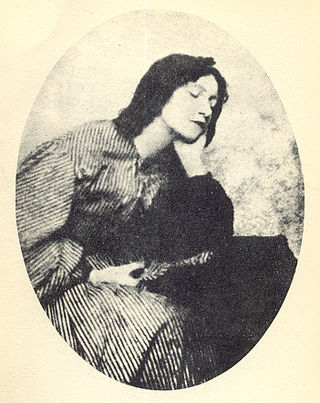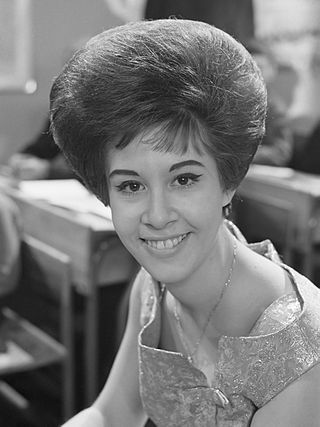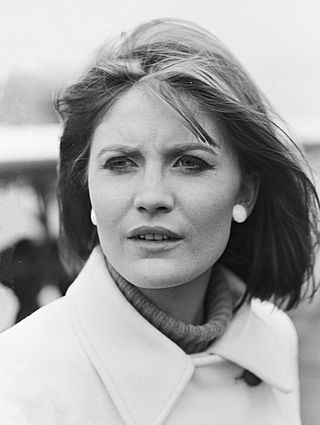Muriel Segal is an English author and journalist.
She was born in London, but educated in New York City, Sydney and Paris. She worked on a farm in New Zealand and while there became a foreign correspondent and also a founder of the Women's Press Club.

Michelangelo Merisida Caravaggio, known as simply Caravaggio, was an Italian painter active in Rome for most of his artistic life. During the final four years of his life he moved between Naples, Malta, and Sicily until his death. His paintings have been characterized by art critics as combining a realistic observation of the human state, both physical and emotional, with a dramatic use of lighting, which had a formative influence on Baroque painting.

Leonardo di ser Piero da Vinci was an Italian polymath of the High Renaissance who was active as a painter, draughtsman, engineer, scientist, theorist, sculptor, and architect. While his fame initially rested on his achievements as a painter, he also became known for his notebooks, in which he made drawings and notes on a variety of subjects, including anatomy, astronomy, botany, cartography, painting, and paleontology. Leonardo is widely regarded to have been a genius who epitomized the Renaissance humanist ideal, and his collective works comprise a contribution to later generations of artists matched only by that of his younger contemporary, Michelangelo.

The Madonna della Pietà informally known as La Pietà is a Roman Catholic dolorous image of Jesus and Mary at Mount Golgotha representing the "Sixth Sorrow" of the Blessed Virgin Mary and a key work of Italian Renaissance sculpture carved by Michelangelo Buonarroti, now enshrined within Saint Peter's Basilica, Vatican City. It is the first of a number of works of the same subject by the Florentine artist.

Elizabeth Eleanor Siddall, better known as Elizabeth Siddal, was an English artist, artists' model, and poet. Siddal was perhaps the most significant of the female models who posed for the Pre-Raphaelite Brotherhood. Their ideas of female beauty were fundamentally influenced and personified by her. Walter Deverell and William Holman Hunt painted Siddal, and she was the model for John Everett Millais's famous painting Ophelia (1852). Early in her relationship with Dante Gabriel Rossetti, Siddal became his muse and exclusive model, and he portrayed her in almost all his early artwork depicting women.

The Pietà is a subject in Christian art depicting the Blessed Virgin Mary cradling the mortal body of Jesus Christ after his Descent from the Cross. It is most often found in sculpture. The Pietà is a specific form of the Lamentation of Christ in which Jesus is mourned by sole privilege of the Virgin Mary alone, whilst representing her "sixth sorrow" and sometimes accompanied by a specific Marian title.
Krautrock is a broad genre of experimental rock that developed in West Germany in the late 1960s and early 1970s. It originated among artists who blended elements of psychedelic rock, avant-garde composition, and electronic music, among other eclectic sources. Common elements included hypnotic rhythms, extended improvisation, musique concrète techniques, and early synthesizers, while the music generally moved away from the rhythm & blues roots and song structure found in traditional Anglo-American rock music. Prominent groups associated with the krautrock label included Neu!, Can, Faust, Tangerine Dream, Kraftwerk, Cluster, Ash Ra Tempel, Popol Vuh, Amon Düül II and Harmonia.

Helen Kate Shapiro is a British pop and jazz singer and actress. While still a teenager in the early 1960s, she was one of Britain's most successful female singers. With a voice described by AllMusic as possessing "the maturity and sensibilities of someone far beyond their teen years", Shapiro recorded two 1961 UK chart toppers, "You Don't Know" and "Walkin' Back to Happiness", when she was just fourteen years old.

Dame Marina Sarah Warner, is an English historian, mythographer, art critic, novelist and short story writer. She is known for her many non-fiction books relating to feminism and myth. She has written for many publications, including The London Review of Books, the New Statesman, Sunday Times and Vogue. She has been a visiting professor, given lectures and taught on the faculties of many universities.
Mary Dorcey is a writer, feminist, LGBTQIA+ activist, and elected member of the Aosdána. She was a writer in residence at Trinity College Dublin from 1995 to 2005, and has taught at University College Dublin.

Imogen Hassall was an English actress who appeared in 33 films during the 1960s and 1970s.
William Harry is the creator of Mersey Beat, a newspaper of the early 1960s which focused on the Liverpool music scene. Harry had previously started various magazines and newspapers, such as Biped and Premier, while at Liverpool's Junior School of Art. He later attended the Liverpool College of Art, where his fellow students included John Lennon and Stuart Sutcliffe, who both later performed with the Beatles. He published a magazine, Jazz, in 1958, and worked as an assistant editor on the University of Liverpool's charity magazine, Pantosphinx.
Bibliography of science fiction, fantasy, historical fiction and nonfiction writer L. Sprague de Camp:
Balkan sworn virgins are women who take a vow of chastity and live as men in patriarchal northern Albanian society, Kosovo and Montenegro. To a lesser extent, the practice exists, or has existed, in other parts of the western Balkans, including Bosnia, Dalmatia (Croatia), Serbia and North Macedonia.
Lai Choi San (meaning Mountain of Wealth) was a Chinese pirate active in the 1920s and 1930s. Her historicity, or at the very least the historicity of most of what is known of her, is disputed since the main source on her life is the 1931 report I Sailed with Pirates by Aleko Lilius, a journalist of dubious repute.

Sandie Shaw is a retired English pop singer. One of the most successful British female singers of the 1960s, she had three UK number one singles with "(There's) Always Something There to Remind Me" (1964), "Long Live Love" (1965) and "Puppet on a String" (1967). With the latter, she became the first British entry to win the Eurovision Song Contest. She returned to the UK Top 40, for the first time in 15 years, with her 1984 cover of the Smiths song "Hand in Glove". Shaw retired from the music industry in 2013.

Saint Luke Drawing the Virgin is a large oil and tempera on oak panel painting, usually dated between 1435 and 1440, attributed to the Early Netherlandish painter Rogier van der Weyden. Housed in the Museum of Fine Arts, Boston, it shows Luke the Evangelist, patron saint of artists, sketching the Virgin Mary as she nurses the Child Jesus. The figures are positioned in a bourgeois interior which leads out towards a courtyard, river, town and landscape. The enclosed garden, illusionistic carvings of Adam and Eve on the arms of Mary's throne, and attributes of St Luke are amongst the painting's many iconographic symbols.

Emotional Backgammon is a 2003 British independent comedy-drama about couples strategizing to repair relationships, with unexpected results. The film was written by Leon Herbert and Matthew Hope, directed by Herbert, and stars Herbert, Wil Johnson, Daniela Lavender, and Jacqueline de Peza. It is Herbert's first feature-length film. During its development it was featured on UK Channel 4's Movie Virgins series; upon its release, it received mixed reviews.

Version No. 2 of Lying Figure with Hypodermic Syringe is a 1968 oil on canvas panel painting by the Irish born, English artist Francis Bacon. It is the second of two similarly titled paintings based on nude photographs of his close friend Henrietta Moraes, who is shown in a reclining position on a bed, themselves part of a wider series of collapsed figures on beds that began with the 1963 triptych Lying Figure. This later version is widely considered the more successful of the two panels.

Ava Cherry is an American singer and model. She collaborated with English musician David Bowie between 1972 and 1975; the two met in New York City when she was a nightclub waitress and Bowie was touring for The Rise and Fall of Ziggy Stardust and the Spiders from Mars. Afterwards, they began a period of personal and artistic collaboration that heavily influenced the Young Americans "blue-eyed soul" era. Following this, she struck out as a solo singer and backing artist for musicians such as Luther Vandross and Chaka Khan.